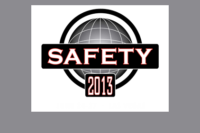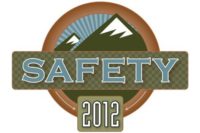Dr. Krause stumps safety pros

 “Are we kidding ourselves?” Dr. Tom Krause, founder of BST and now an independent consultant, asked several hundred safety pros at a session at ASSE’s Safety 2013.
“Are we kidding ourselves?” Dr. Tom Krause, founder of BST and now an independent consultant, asked several hundred safety pros at a session at ASSE’s Safety 2013.
Kidding about what? Dr. Krause’s point: low OSHA injury rates are deceiving many companies into believing they have better safety performance than is really the case. Fatalities and serious, often life-altering injuries on the job are not declining but flatlining, he said. Yet ask many CEOs or manager about the state of their safety program, and they say, “great.”
Meanwhile, Dr. Krause cited studies indicating many safety cultures are mediocre, core safety systems are failing, and incident investigations are often sloppy.
The audience was able to text message questions to Dr. Krause during his presentation, which he could read off of an iPad. And it was evident a number of pros did not take kindly to the idea that they are kidding themselves.
"He calls me an alarmist"
“I’m well aware of the potential for fatalities at my facility,” said one pro. “But when I bring this up to my manager, he calls me an alarmist. What do you suggest I do?”
Said another attendee: “Our legal department wants us to deliberately keep incident findings vague to less the chance of lawsuits.”
“I take my reports on the potential for fatalities or serious injuries to my manager, and he whitewashes them. Am I to go over his head? If I go to the CEO, I could get fired. Is it worth my career?”
The wrong audience
Afterward his session, Dr. Krause said he realized that he was taking his “kidding” message to the wrong audience. “I don’t mean to insult safety pros,” he said. In fact, many cannot do much to press senior leadership on “buying into” the reality that a fatality could be just around the corner, based on audit findings, near miss reports, or other data, he said, without risking their jobs.
It’s the level of management above these pros that is kidding themselves, said Dr. Krause. The level removed from day-to-day safety and who hang onto the OSHA injury rate because it is often a source of their performance evaluation and bonus pay. “I’m thinking I need to aim higher with this presentation,” he said.
Looking for a reprint of this article?
From high-res PDFs to custom plaques, order your copy today!










